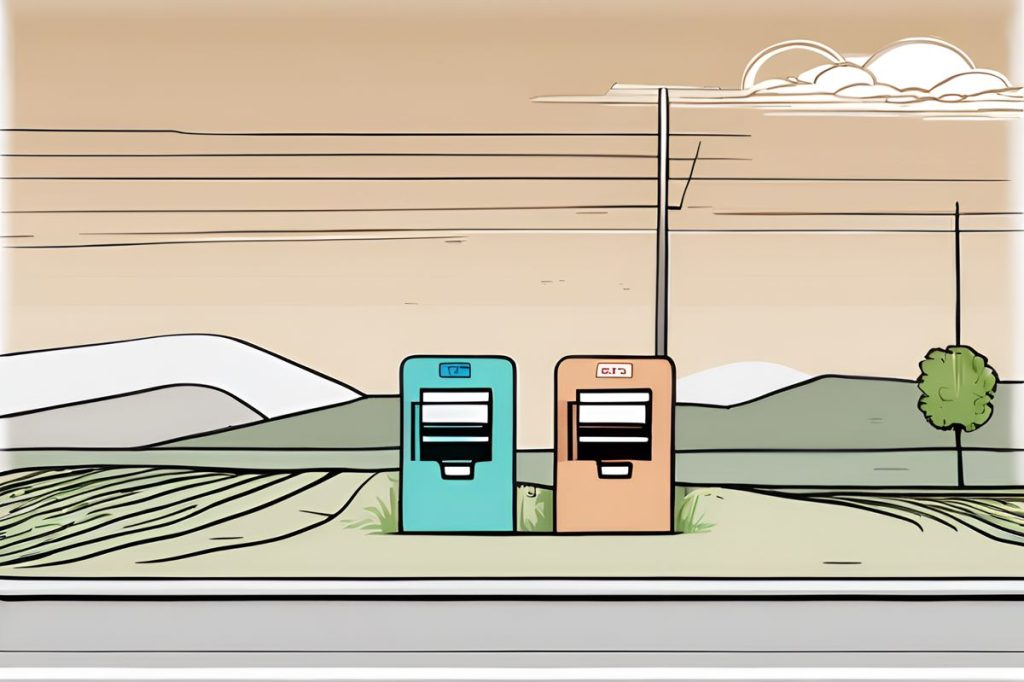MPs are concerned about the decreasing access to ATMs in rural areas, particularly impacting senior citizens. Banks defend their reduction of ATMs due to high maintenance costs and the shift towards digital banking, sparking a debate between social responsibility and profitability. Balancing the needs of all customers remains the key focus amidst this ongoing dilemma.
What are the concerns over ATM access in rural communities?
Access to ATMs in rural areas has decreased, raising concerns among MPs about the impact on senior citizens and the wider community. Banks defend their reduction of ATMs by citing high maintenance costs and a shift toward digital banking. However, this leaves behind those not ready for digital transition, amplifying the debate between social responsibility and profitability. Finding a balance to serve all customers is key.
The ATM Dilemma in Rural Areas
In recent times, the scarcity of automated teller machines (ATMs) in rural areas has sparked a contentious debate. Elected officials have voiced concerns, suggesting that the absence of these banking machines in less populated regions is leaving senior citizens particularly vulnerable. During a House commerce committee meeting, the issue was brought to the forefront, with claims that banks are neglecting their social responsibility by not providing sufficient access to cash withdrawal facilities for the elderly who rely on them. Kyriakos Hadjiyiannis, the committee’s chairman, went as far as to contact banks directly, only to receive a disappointing refusal, as banks prioritized technological advancements over expanding their ATM network.
The banks’ stance on ATM deployment is clear: maintaining and installing ATMs, especially in areas with fewer transactions, is not cost-effective. They have every right, as businesses, to follow strategies that enhance their profitability. Profitable entities are fundamental to the growth of the economy, creating jobs and fostering development opportunities—a fact that remains true even if it clashes with the socialist ideologies held by some politicians who view profit negatively.
The Clash between Social Responsibility and Profitability
The tension between social responsibility and the pursuit of profit has been exemplified by the closure of the cooperative bank. A model that focused more on community service than on financial gain ultimately led to its downfall, with taxpayers bearing the cost of this failure. This has amplified the argument against banks that prioritize profitability over community welfare. Akel’s deputy, Costas Costa, described the banks’ response as callous and out of touch with the hardships faced by pensioners in rural sectors, where the lack of ATMs exacerbates the challenges of daily living.
It’s a conundrum with no easy resolution. On one side, the demand for banks to extend their services to serve the community better, and on the other, the banks’ imperative to operate sustainably and profitably. While banks have defended their approach by citing operational costs and a shift towards digital banking solutions, deputies argue that this leaves a void in rural areas that are not as well served by the digital transition.
The Digital Transition and Its Discontents
As banks increasingly turn to technology, offering services such as cashback and online banking, they suggest these innovations as alternatives to physical banking services. However, this transition overlooks segments of the population that are either not adept or not interested in digital banking solutions. The digital divide becomes apparent, leaving behind those who do not have the means or the literacy to engage with the new banking paradigms.
The shift towards the digital realm is, in many ways, an inevitable march towards what many consider to be a more efficient and accessible form of banking. Yet, this raises the question: What is the cost of progress, and who pays the price? Banks argue that reducing the number of ATMs and pushing for digital services is a step forward, yet the pushback from politicians and affected communities suggests that the path to a fully digital banking future is fraught with social challenges.
Looking for a Middle Ground
Finding a middle ground that balances profitability with social responsibility is crucial. The debate continues as politicians and banks lock horns over the issue of ATM availability. While some argue that banks must consider the impact of their decisions on all customers, including those in rural and less profitable areas, banks need to manage their resources effectively to ensure long-term sustainability.
The conversation surrounding ATMs in rural areas is more than a logistical issue—it’s about bridging the gap between the evolving financial landscape and the needs of a diverse population. It’s a delicate balance to strike, one that requires ongoing dialogue and a commitment to finding solutions that serve the interests of both the banking industry and the communities it is meant to support.
How are banks justifying the reduction of ATMs in rural areas?
Banks justify the reduction of ATMs in rural areas by pointing to high maintenance costs and the shift towards digital banking. They argue that maintaining and installing ATMs, especially in areas with fewer transactions, is not cost-effective.
What is the impact of decreasing access to ATMs in rural communities?
Decreasing access to ATMs in rural communities is particularly concerning for senior citizens and the wider community. Those who are not ready for the digital transition are left behind, amplifying the debate between social responsibility and profitability.
How are politicians responding to the issue of decreasing ATM access in rural areas?
Politicians have voiced concerns over the lack of ATMs in rural areas, emphasizing the vulnerability of senior citizens. There is a clash between the banks’ pursuit of profit and their social responsibility to provide access to essential banking services.
What challenges are faced by rural communities due to the shift towards digital banking?
The shift towards digital banking poses challenges for rural communities that may not have the means or literacy to engage with new banking technologies. This digital divide leaves segments of the population underserved and highlights the need for a balance between progress and inclusivity.

